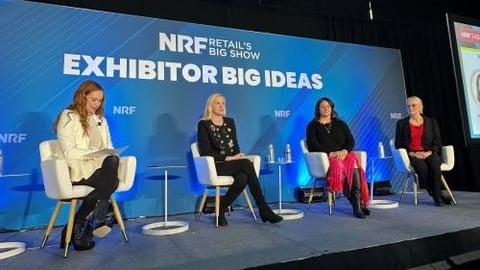Behind Kroger’s Proactive Approach to Workplace Safety
When it comes to protecting the products it sells, The Kroger Co. realizes one of the best ways to do so is by protecting its associates. Frank Patercity, Kroger’s director of corporate security, investigations and organized retail crime, and Matt Talbot, senior manager for the company’s threat assessment team, took the stage at the Retail Industry Leaders Association’s (RILA) Retail Asset Protection Conference this week to dive into how the company mitigates workplace violence through threat assessment and management.
When Patercity joined Kroger about two years ago, he explained, he quickly identified the need for a team dedicated to identifying, assessing and managing threats to the retailer’s business, associates and customers. Talbot, who now leads that team along with three threat managers, describes his group as the “see something, say something team” that acts as the prevention arm of corporate security.
Their work is proactive, Talbot explained, and and the team helps look for clues that something might be wrong with an associate.
While Talbot reasons that not everything can be prevented from happening, his threat assessment team can greatly reduce the volume of violence that occurs in the workplace. As he explained, the benefit of doing so ranges from financial protection for the company to the psychological wellness of its associates by virtue of having that presence.
Taking a Closer Look
Kroger has a zero-tolerance policy in place for safety threats, meaning that every concern that is reported by an employee will be responded to in a manner proportional to the threat. While this is the case, Talbot’s team focuses on figuring out which threats are being posed by people who are actively taking steps to carry out a potentially violent plan or are on the path to doing so.
This is considered predatory or targeted violence. Talbot explained that a delineation must be made between someone being aggrieved about something that happened at work and making vague statements about it, and someone who is doing their homework and taking steps to carry out an act of violence.
[RELATED: Creating an Effective Workplace Violence Plan]
Talbot stressed the importance of being flexible with management strategies and not necessarily using a one-size-fits-all approach to dealing with credible threats, especially considering that, in many situations, the person making the threats is struggling or in crisis.
A collaborative approach between departments or even outside entities can be key to making this work, and tailoring that approach to the needs of the person who is struggling is also an important consideration. Working collectively and including key stakeholders can make a difference in being able to support a person who may be in need of help.
While only a small amount of reported threats turn out to be credible, it can still be important to reach out to an associate displaying worrisome behavior. Talbot explained that there should be no fear in engaging with those people since they're often longing for a connection or sense of identity.
Making It Work
For those retailers looking to stand up a threat management team like the one at Kroger, Talbot expressed his belief that what’s really needed to do so are common sense and heart. With those, he believes a team should be able to get ahead of the curve and make a difference.
Additionally, Patercity stressed the importance of getting buy-in from both a corporate perspective, and from employees and management, when creating a threat management plan. If the workforce believes the security team is solely responsible for protecting the organization from threats, for example, program operations are not being effectively communicated.
The asset protection or threat management team should provide the tools and first response capabilities, Patercity shared, but managers must be the custodians of the assets and the whole organization should suppose those efforts.






